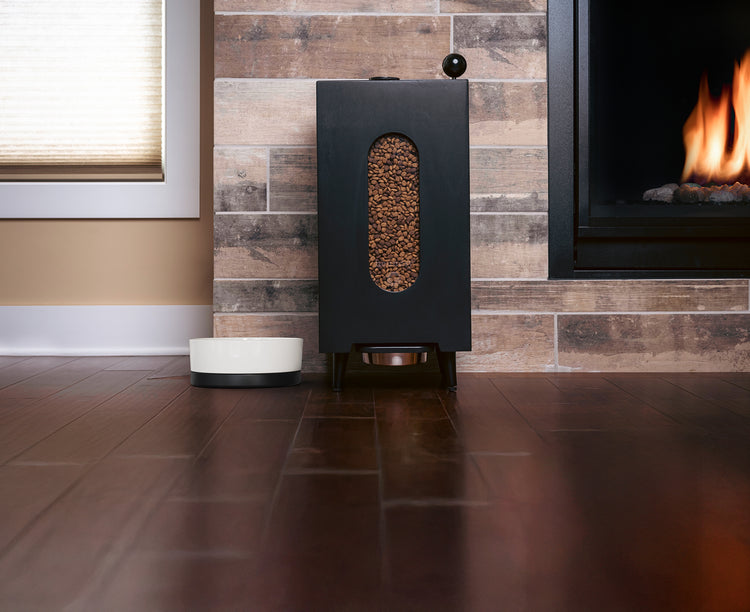How Long Can Dry Dog Food Sit Out? Essential Guidelines for Pet Owners
- Houndsy
Table of Contents
- Introduction
- Understanding Dry Dog Food
- How Long Can Dry Dog Food Sit Out?
- Best Practices for Feeding Dry Dog Food
- Proper Storage Techniques for Dry Dog Food
- Conclusion
Introduction
As loving pet parents, we want to ensure that our furry friends receive the best nutrition possible. One question that often arises is: how long can dry dog food sit out? This seemingly simple query is crucial for maintaining our dogs' health and well-being. Did you know that leaving kibble out for too long can lead to spoilage, loss of nutrients, and even health risks for our pets?
In this blog post, we’ll explore the intricacies of dry dog food storage and answer common questions surrounding its shelf life. By the end, you’ll have a clear understanding of best practices for feeding your dog and how to store their food properly, ensuring that every meal is fresh and nutritious.
We’ll discuss various factors that affect the freshness of dry dog food, how to recognize signs of spoilage, and practical tips for storage. Plus, we’ll highlight how our innovative Houndsy Kibble Dispenser can simplify your pet feeding routine and enhance your dog’s mealtime experience.
So, let’s dive in and ensure that our beloved pets enjoy every bite of their meals!
Understanding Dry Dog Food
What is Dry Dog Food?
Dry dog food, or kibble, is a popular choice among pet owners due to its convenience, long shelf life, and balanced nutrition. Typically composed of ingredients like meat, grains, and vegetables, kibble is designed to provide essential nutrients for our pets' health. It’s formulated to meet specific dietary requirements based on a dog's age, size, and activity level, making it a versatile option for many dog breeds.
Why Proper Storage Matters
Proper storage of dry dog food is essential for several reasons:
- Nutritional Quality: Exposure to air, moisture, and heat can degrade the vitamins and minerals in dry dog food, leading to a less nutritious meal for our pets.
- Safety Concerns: Spoiled food can cause gastrointestinal issues, including upset stomach, vomiting, or diarrhea.
- Pest Control: Leaving kibble out can attract pests like ants and rodents, posing additional health risks.
Understanding how to store dry dog food correctly will help us maintain its quality and ensure our dogs receive the nutrition they need.
How Long Can Dry Dog Food Sit Out?
General Guidelines
The general consensus among veterinarians and pet nutritionists is that dry dog food can safely sit out in a bowl for up to 24 hours. However, several factors can influence this timeframe, including:
- Ingredient Quality: Higher-quality kibbles often contain fewer preservatives, which can impact their freshness.
- Environmental Conditions: Humidity and temperature play a critical role in food spoilage. Warmer, humid environments can accelerate the degradation of kibble.
- Bowl Material: Certain materials, like plastic, can retain odors and moisture, potentially affecting the kibble.
Signs of Spoilage
It’s essential to know how to identify if the kibble has gone bad. Here are some indicators to watch for:
- Smell: Fresh kibble has a pleasant, appetizing aroma. If the kibble smells rancid or off, it’s best to discard it.
- Texture: Stale kibble may lose its crunch and become soft or chewy. If it crumbles easily, it may be past its prime.
- Mold: Any visible mold or moisture in the kibble indicates spoilage. Discard it immediately.
- Pests: If you notice insects or pests around the food, it’s time to dispose of it and clean the area thoroughly.
- Your Dog’s Reaction: If your dog suddenly shows disinterest in their kibble or refuses to eat it, it may be a sign that the food has spoiled.
Best Practices for Feeding Dry Dog Food
Portion Control
To prevent spoilage, serve only the amount of kibble your dog will eat in one sitting. If your dog doesn’t finish their meal within 30 minutes to an hour, remove any uneaten food. This practice not only prevents waste but also helps monitor your dog’s appetite and dietary needs.
Feeding Schedule
Establishing a consistent feeding schedule can be beneficial for both you and your dog. Most dogs thrive on routine, and regular meal times can help with digestion and behavior. Aim for two to three meals per day, depending on your dog's size and age.
Using the Houndsy Kibble Dispenser
Our flagship product, the Houndsy Kibble Dispenser, is designed to streamline the feeding process. With its ergonomic crank and standing height, it eliminates the need for bending and ensures perfect portion control every time. The dispenser also features a large storage capacity of 25–30 lbs and an auto-locking mechanism to keep curious pets and toddlers safe.
By using the Houndsy Kibble Dispenser, we can enhance the feeding ritual and maintain a clean and organized feeding area, making mealtime more enjoyable for everyone involved.
Proper Storage Techniques for Dry Dog Food
Keep It in Its Original Packaging
Many dog food manufacturers design their packaging to keep the food fresh for a longer period. Whenever possible, keep the kibble in its original bag and store it in an airtight container for added protection. This method provides a double layer of security against moisture and air.
Use Airtight Containers
Investing in a high-quality airtight container is a smart choice for storing dry dog food. This protects the kibble from external elements, keeping it fresh and safe from pests. Make sure the container is clean and dry before adding the food.
Store in a Cool, Dry Place
Heat and humidity can dramatically reduce the lifespan of dry dog food. Store your kibble in a cool, dry area away from direct sunlight, such as a pantry or cupboard. Avoid places like garages or basements where temperature fluctuations can occur.
Rinse and Clean Bowls Regularly
To maintain a hygienic feeding environment, wash your dog’s food bowl at least once a week. Use hot, soapy water and ensure it’s thoroughly dried before refilling it with fresh kibble. This practice helps eliminate any residual odors or bacteria that could affect the food.
Follow Manufacturer Guidelines
Always refer to the storage instructions provided by the dog food manufacturer. Some formulas may have specific recommendations based on their ingredients, so it’s essential to adhere to these guidelines for optimal freshness.
Conclusion
In summary, understanding how long dry dog food can sit out is crucial for maintaining our pets' health and ensuring they receive the nutrition they need. By following general guidelines—limiting food exposure to 24 hours, monitoring for spoilage signs, and practicing proper feeding and storage techniques—we can create a safe and enjoyable mealtime experience for our furry companions.
As proud pet owners, we can also enhance our feeding rituals with products like the Houndsy Kibble Dispenser and our stylish Accessories collection. By investing in quality products, we simplify our pet care routines and elevate our dogs’ feeding experiences.
FAQ
1. How long can dry dog food sit out?
Dry dog food can safely sit out for up to 24 hours. If not eaten within that time frame, it’s best to discard any uneaten food.
2. Does dry dog food go bad if left out?
Yes, dry dog food can spoil if left out for too long, especially in warm or humid conditions. Always check for signs of spoilage before feeding.
3. How should I store dry dog food?
Store dry dog food in its original packaging inside an airtight container, in a cool, dry location away from heat and sunlight.
4. Can I leave dry dog food out overnight?
While it may be acceptable for some dogs, it’s generally best to avoid leaving dry dog food out overnight to prevent spoilage and protect your dog’s health.
5. What are the signs of spoiled dry dog food?
Signs of spoilage include an off smell, loss of texture, visible mold, pest infestation, and a lack of interest from your dog. If you notice any of these signs, discard the food.












